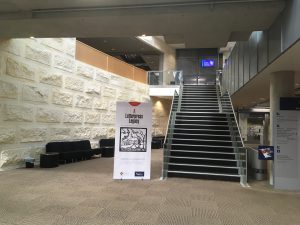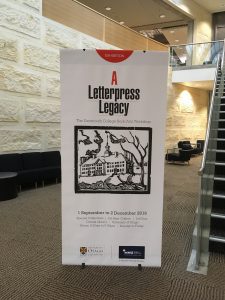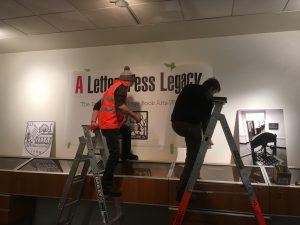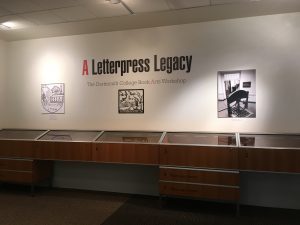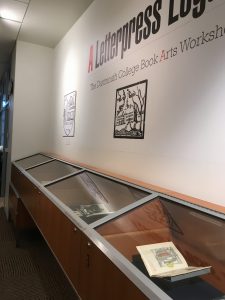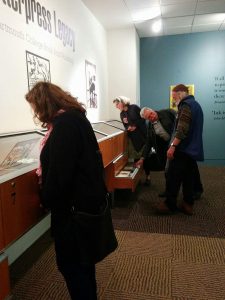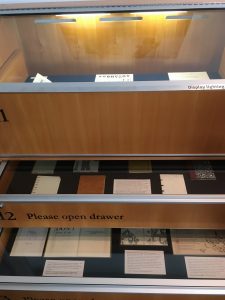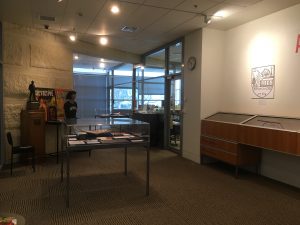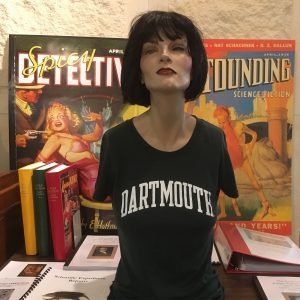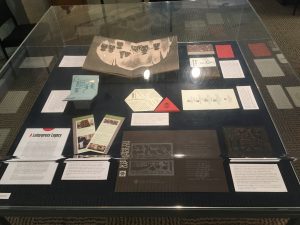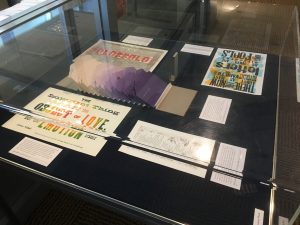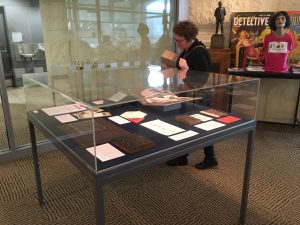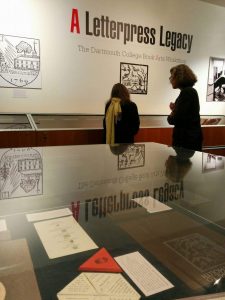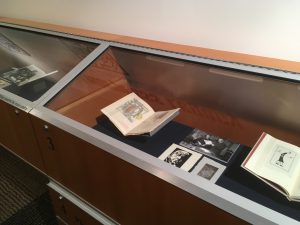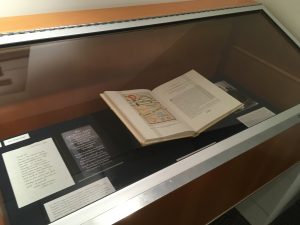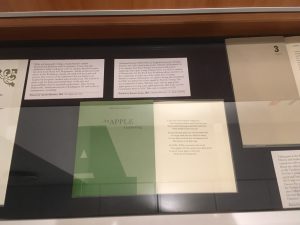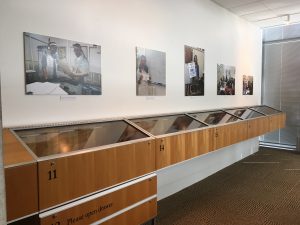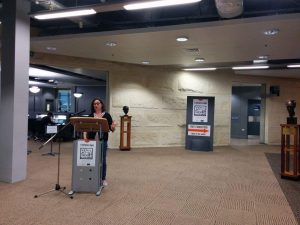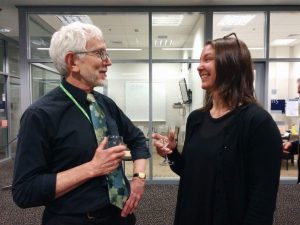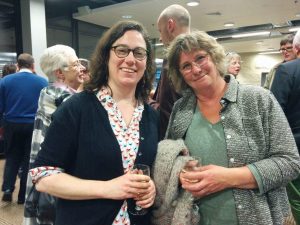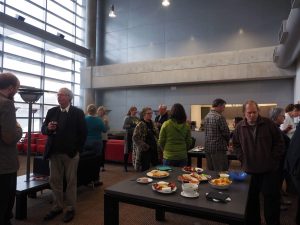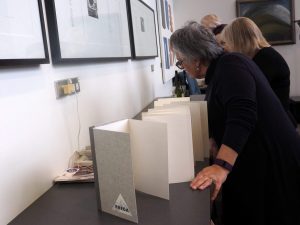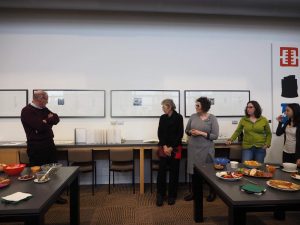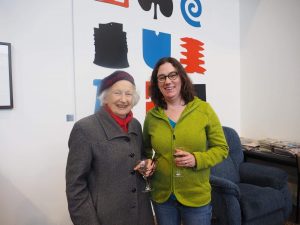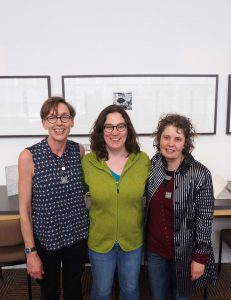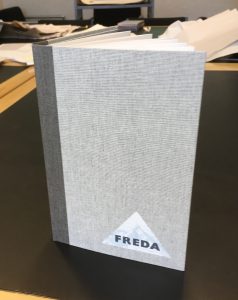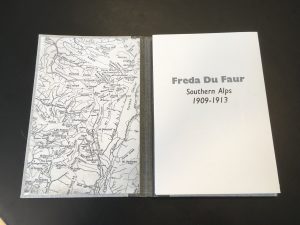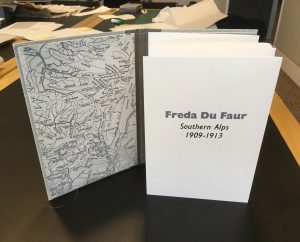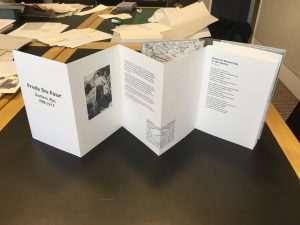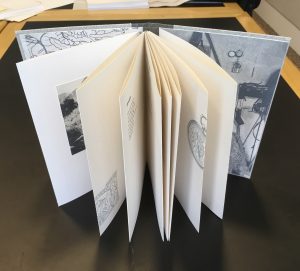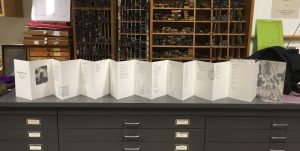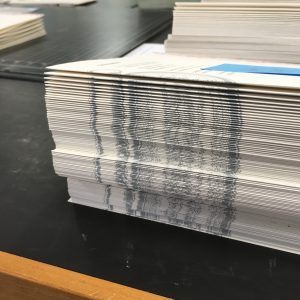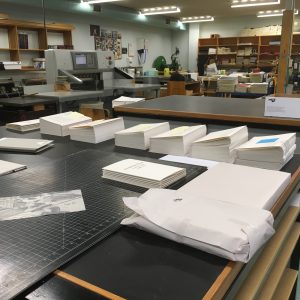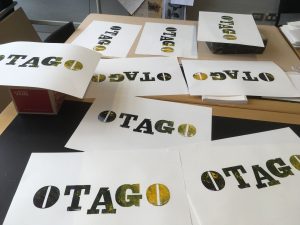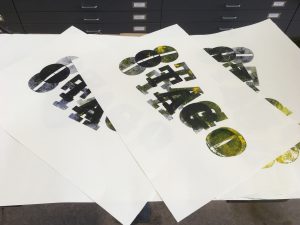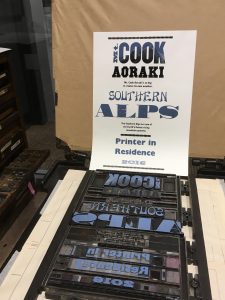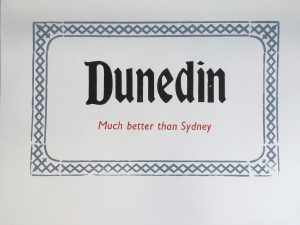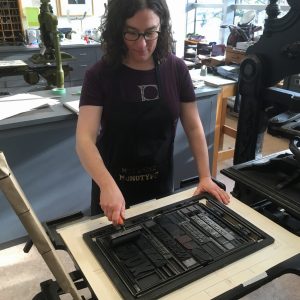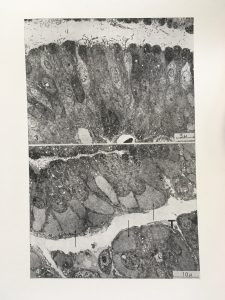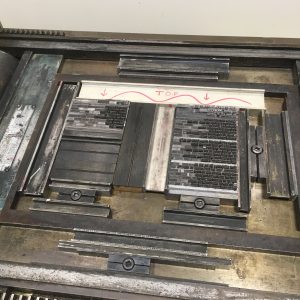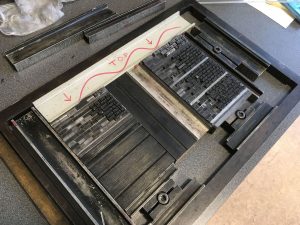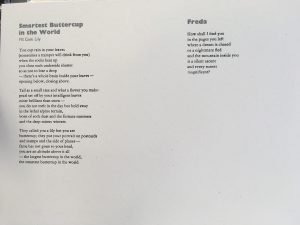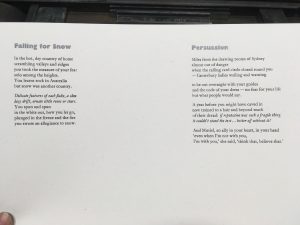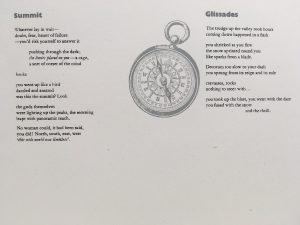Another part of this Matariki exchange has been the exchange of exhibits between Dartmouth College and the University of Otago. As I write this post, the University of Otago Printer in Residence exhibit is going up at Dartmouth College.
While I was in Dunedin the Dartmouth College Book Arts Workshop exhibit focusing on the 25th anniversary its opening went up. It is called “A Letterpress Legacy”. It was interesting to see how Donald and Romilly worked with the materials and information from our 25th anniversary exhibit, that we displayed in March of 2014. The exhibit shows a lot of different projects printed and bound by students and community members throughout the years at the Book Arts Workshop. SOme projects were done as part of a curricular class, some in workshops and some just for fun and interest. Donald and Romilly tracked down and emailed students and recent alums and from long ago to learn about their experiences in the Book Arts Workshop (and Graphic Arts Workshop before 1970). The results were exhibit captions with intriguing backstories and fascinating personal accounts to go with the items that people have made over the years.
The exhibit space is a very different kind of space than our space at Dartmouth. Our space is very grand and public—very prominently located in Baker Library’s main hall. But because it’s a very public space it can be difficult to linger over text. The University of Otago’s Special Collection space however is a bit quieter. It is still a public space in the Central Library and everyone is encouraged to visit, but it is more removed from the main entry and thourough fares of the library. It is also somewhat enclosed. This makes it a contemplative space, where spending time with items on display and accompanying text is easy to do.
This is the large poster/banner leading viewers up the stairs in the library to Special Collections and the exhibit. The image is from an old woodcut of Dartmouth Hall that someone (presumably a student) made years ago. I wish we knew who did it, but it makes for a great image for advertising the exhibit.
Putting up the big banner in the exhibit.
Along with the nice deep cases, there are drawers viewers can pull open to find more items on display.
This is the view of the exhibition space and Special Collections as you walk in the door. Notice the manikin on the table to the left. She is left over from an exhibit about fashion and now is a fixture in the space. We decided she needed a Dartmouth t shirt.
Of course the opening reception for the show was yet another opportunity for speeches. Looks like I’m talking to myself here, but I swear there were people there listening.
The reception was well attended by some of my favorite people. Here is Lyle Hanton the head of the chemistry department and an avid book collector. Enjoying a glass of wine with Lyle is Romilly Smith, Donald’s assistant in Special Collections. She is a bookbinder as well as fabulous exhibit designer and researcher.
I even ran into Marion Mertens, who worked—a few years before me—at the same conservation lab where I worked as a book conservator back in Massachusetts. Funny to have to go all the way to New Zealand to meet her!
